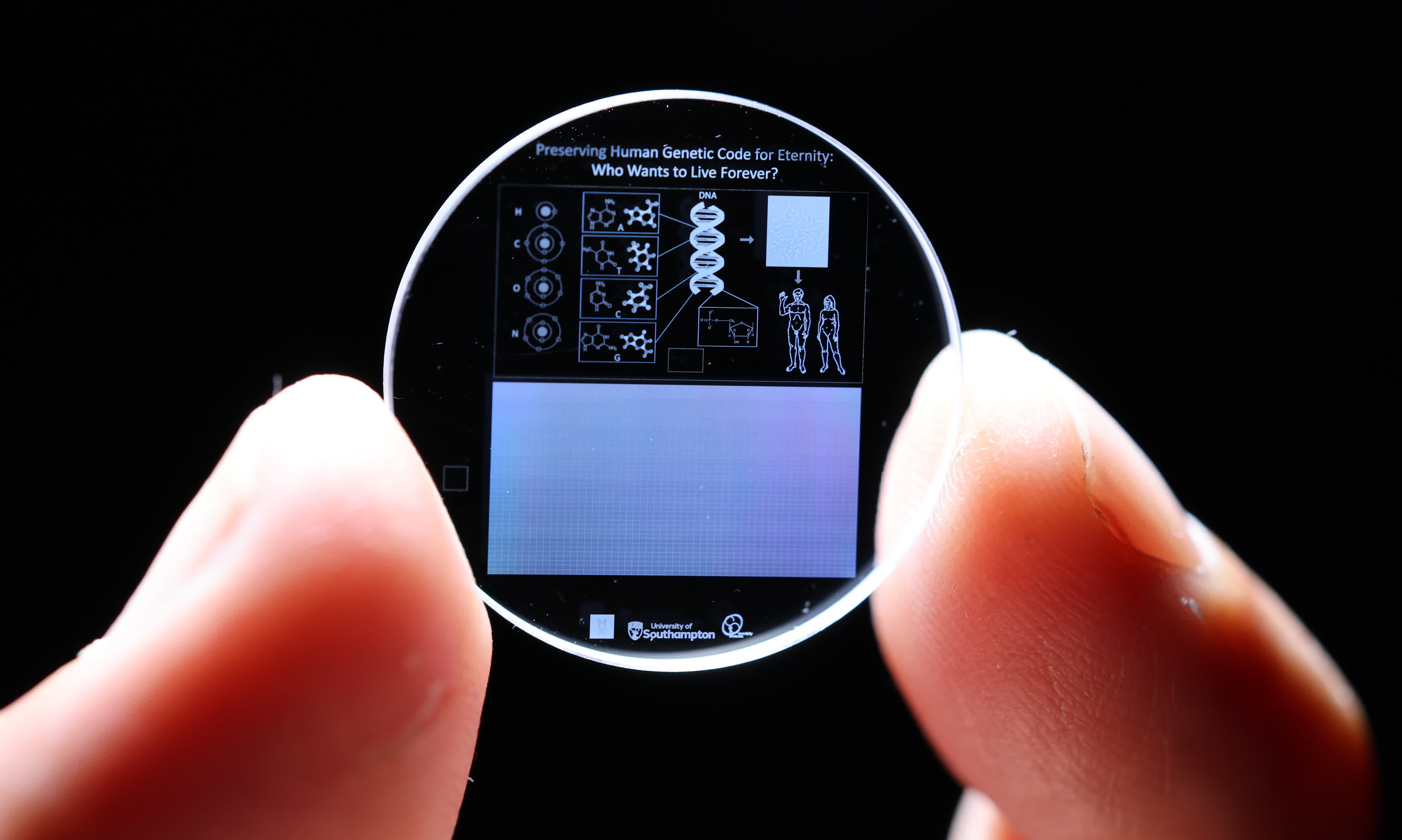Researchers at the University of Southampton in the UK successfully stored the entirety of the human genome sequence onto an indestructible 5D optical memory crystal no bigger than a penny. The indestructibility claims are no joke since the discs can withstand temperatures up to 1,000°C, cosmic radiation, and even direct impact forces of 10 tons per cm2.



So, as I understand it, and I don’t, 5D is just fancy marketing due to the really weird properties of the crystals used to store the data in. They are just calling properties of the crystal, dimensions.
I found the wiki page on it https://en.wikipedia.org/wiki/5D_optical_data_storage
According to the University of Southampton:
It’s actually cromulent technical terminology to call those extra degrees of freedom “dimensions”, it’s only in common parlance that “dimension” is restricted specifically to spatial dimension. Having hundreds or even thousands of dimensions is not unknown in data science.